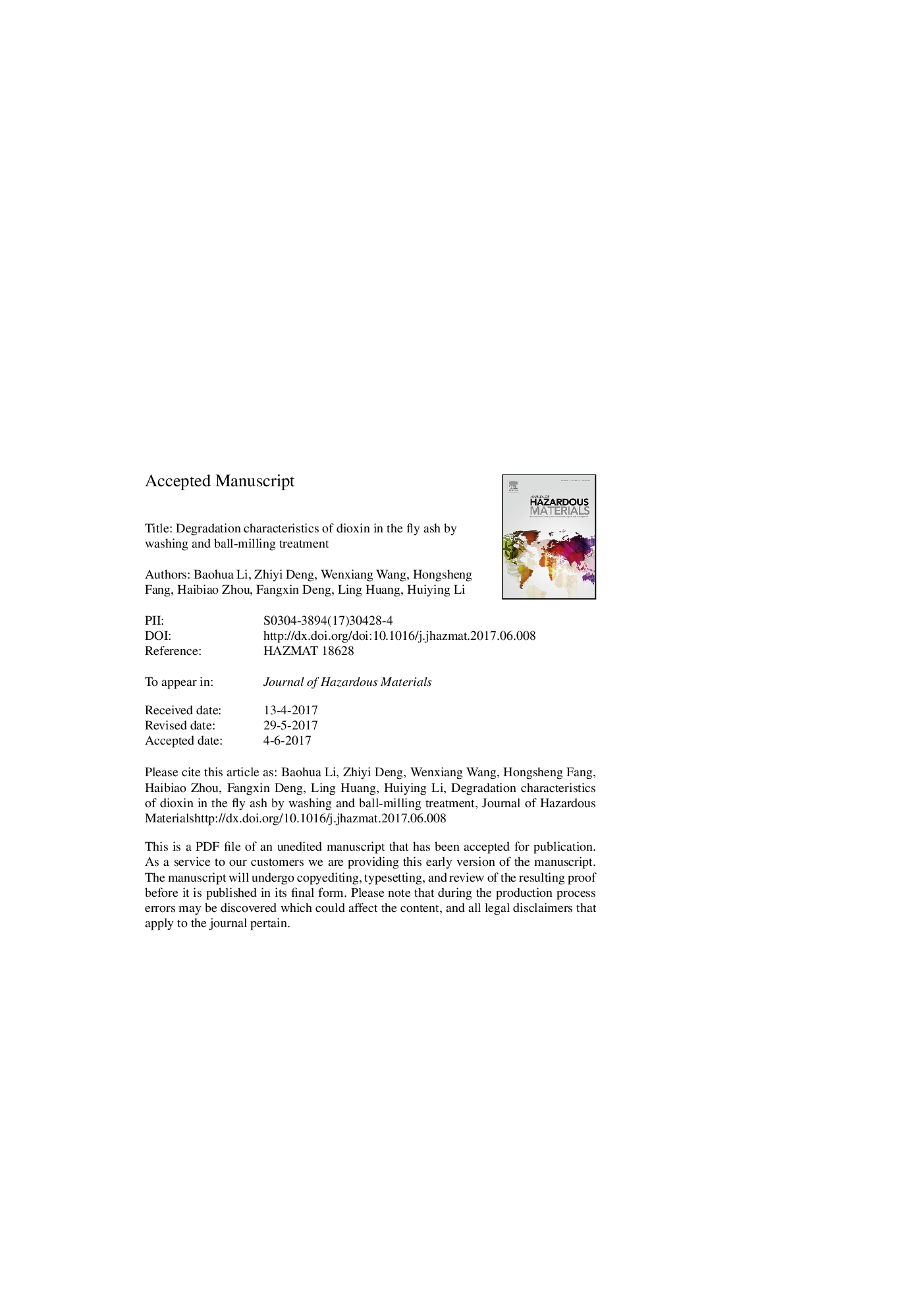| Article ID | Journal | Published Year | Pages | File Type |
|---|---|---|---|---|
| 4979337 | Journal of Hazardous Materials | 2017 | 24 Pages |
Abstract
In this study, samples were taken from different types of municipal waste incineration plants in the Pearl River Delta, China. Analyzing the distributive characters of elements and dioxin congeners in fly ash, the method of washing-ball milling was utilized to remove chloride and degrade dioxin in fly ash. The results showed that more than 90% of particles were in the range of 1 â¼Â 50 μm and most of dioxin and metals existed in 0.030 â¼Â 0.075 mm of particles. K, Na, Cl and Br in fly ash could be removed by washing efficiently, however dioxin and other metals remained in the solid phase. Washing and Fe/Ni-SiO2 ball-milling method seemed to be the best choice as the dioxin removal rate could reach up to 93.20%. Dioxin could be degraded to low toxic compounds and heterochorides with Fe/Ni as dechlorinating agent. In the process, PCDFs were partly transformed to PCDDs, while too long time of ball-milling was not benefited for dioxin removing. In addition, the phases of calcium such as Ca(OH)2, CaCO3 and CaSO4 in fly ash could transform from crystal to amorphous.
Related Topics
Physical Sciences and Engineering
Chemical Engineering
Chemical Health and Safety
Authors
Baohua Li, Zhiyi Deng, Wenxiang Wang, Hongsheng Fang, Haibiao Zhou, Fangxin Deng, Ling Huang, Huiying Li,
